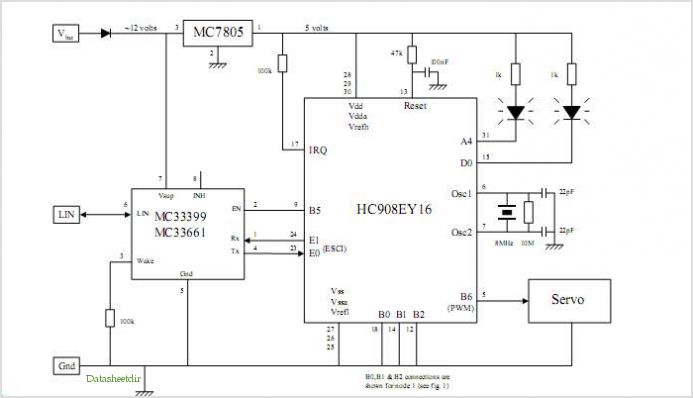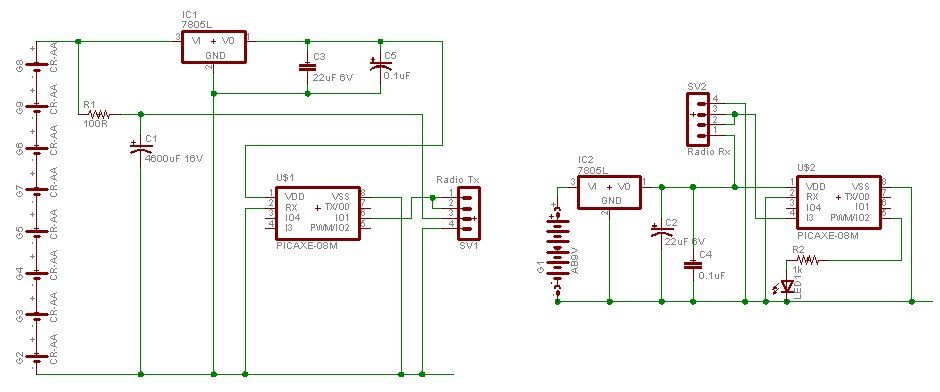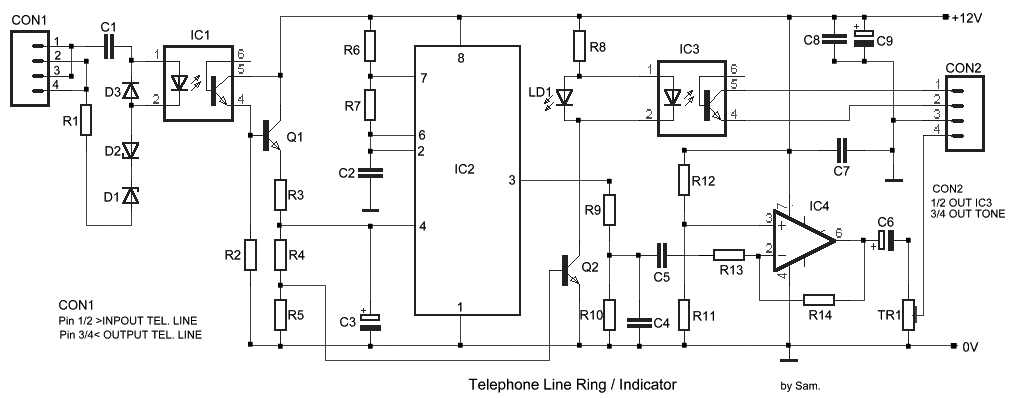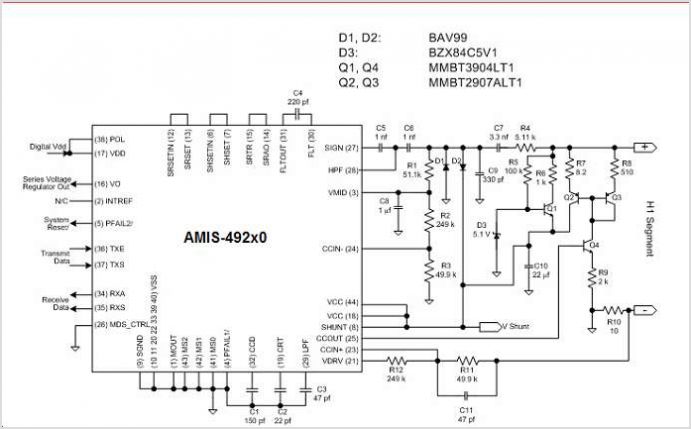
Mc68hc908ey16 Controlled Robot Using The Lin Bus

System Oscillator Crystal/Ceramic Oscillator. The following circuit combination of resistors, capacitors, and inductors depicts an equivalent circuit for a crystal or ceramic oscillator.
The system oscillator, specifically a crystal or ceramic oscillator, utilizes a combination of passive components, including resistors, capacitors, and inductors, to create a stable frequency output. The equivalent circuit typically consists of a parallel resonant circuit formed by a crystal or ceramic element, which exhibits piezoelectric properties.
In such an oscillator circuit, the crystal or ceramic resonator is represented by its equivalent series resistance (ESR), resonant frequency, and load capacitance. The resistors are employed to set the biasing conditions and stabilize the operating point of the oscillator, while capacitors are used for coupling and filtering purposes. Inductors may also be included to enhance the frequency stability or to form part of a feedback loop.
The oscillator can be configured in various topologies, including Colpitts or Clapp oscillator configurations, which utilize the aforementioned components to achieve the desired oscillation characteristics. The feedback loop, essential for sustaining oscillations, is typically formed by connecting the output of the amplifier back to the input through a network of these passive components.
Overall, the design of a crystal or ceramic oscillator circuit requires careful consideration of component values to ensure precise frequency generation and stability, making it suitable for applications in clocks, timers, and various electronic devices where accurate timing is critical.System Oscillator Crystal/Ceramic Oscillator. The following circuit combination of resistors, capacitors and inductors depicts an equivalent cir- cuit for a crystal or ceramic Oscillator 🔗 External reference
The system oscillator, specifically a crystal or ceramic oscillator, utilizes a combination of passive components, including resistors, capacitors, and inductors, to create a stable frequency output. The equivalent circuit typically consists of a parallel resonant circuit formed by a crystal or ceramic element, which exhibits piezoelectric properties.
In such an oscillator circuit, the crystal or ceramic resonator is represented by its equivalent series resistance (ESR), resonant frequency, and load capacitance. The resistors are employed to set the biasing conditions and stabilize the operating point of the oscillator, while capacitors are used for coupling and filtering purposes. Inductors may also be included to enhance the frequency stability or to form part of a feedback loop.
The oscillator can be configured in various topologies, including Colpitts or Clapp oscillator configurations, which utilize the aforementioned components to achieve the desired oscillation characteristics. The feedback loop, essential for sustaining oscillations, is typically formed by connecting the output of the amplifier back to the input through a network of these passive components.
Overall, the design of a crystal or ceramic oscillator circuit requires careful consideration of component values to ensure precise frequency generation and stability, making it suitable for applications in clocks, timers, and various electronic devices where accurate timing is critical.System Oscillator Crystal/Ceramic Oscillator. The following circuit combination of resistors, capacitors and inductors depicts an equivalent cir- cuit for a crystal or ceramic Oscillator 🔗 External reference





